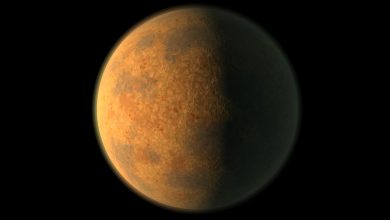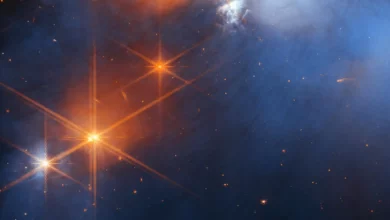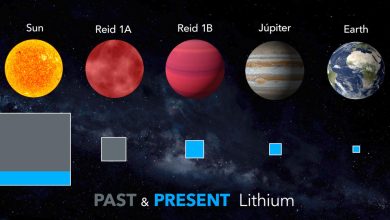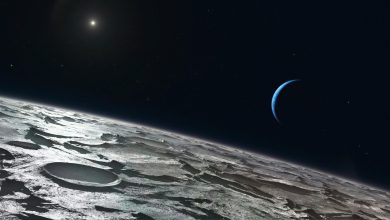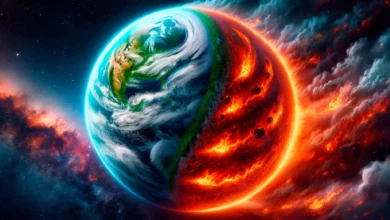
Welcome back to our ongoing “Interplanetary Series.” In our previous instalments, we looked at what it would take to live on Mercury, Venus, the Moon, and Mars. Today, we take a look at the Main Asteroid Belt. This massive region of space contains several large bodies that could one day be settled by human beings.
For decades, futurists and theorists have pondered the idea of establishing a permanent human presence and infrastructure in the Asteroid Belt. Its abundant resources and the fact that it occupies a strategic spot between the inner and outer Solar systems make it an attractive option for future exploration and development.
In fact, asteroid mining is considered a means to ensure our survival and usher in a period of post-scarcity for our civilization. While the challenges are certainly herculean, the benefits are rather enticing. With a little imagination and creative design, the Belt could also become an attractive destination for those looking for a little adventure tourism and fun in low gravity.
Some day, interplanetary tourists could be listening to messages like this:
“Good morning, passengers! Welcome aboard the ferry liner Kirkwood, your one-stop service to Ceres! For those among you that are first-timers, be prepared for fun, adventure, and some of the most luxurious accommodations in the Solar System! While you’re our guest, we insist you take full advantage of the low-gravity environment and the exotic surface!”
“A reminder that making the transition from an Earth-normal gravity environment can be difficult. Report to a clinician if you find yourself experiencing any of the following symptoms: vertigo, dizziness, vomiting, fainting spells, or rapid heart rate. These can be signs that you are having trouble adjusting. But don’t worry, our expert staff will help you find your footing (not a guarantee)!”

“Adventure tours include day trips to Ahuna Mons, the highest peak on Ceres, and Occator, the largest crater. We also recommend the multi-day excursions to the famous “bright spots,” Cerealia Facula and the Vinalia Faculae. And be sure to check out the bright spots here, including five-star accommodations, dining, gaming, and recreation centers.”
“Those who are transferring to Vesta or Pallas must first pass through customs and biomonitoring for a second screening. We apologize for the inconvenience but remind people that maintaining public health is a priority here in the Belt. After all, the air we breathe is a shared amenity, so let’s keep it clean and healthy!”
“A reminder that the import of flora and fauna is strictly prohibited. Please respect the local life cycle and not attempt to take seeds or plants from the local biome. All species on Ceres are adapted to the local gravity and are not likely to survive in another environment.”
The discovery of the Asteroid Belt began in 1800 due to an issue with the then-known model of the Solar System. According to the Titius-Bode Law, which accurately predicted the orbits of the planets, there was an unexplained gap between the orbits of Mars and Jupiter. To resolve this, the United Astronomical Society began observing this gap in the hopes of finding something.
The group included many famed astronomers, like William Herschel, who had discovered Uranus and its moons in the 1780s. Giuseppe Piazzi, the chair of astronomy at the University of Palermo, had been asked to join the Society. Ironically, he was the first to make a discovery in this region (consistent with what the Titus-Bode Law predicted) before the invitation had even arrived.
He named this object “Ceres” after the Roman god of the harvest and the patron god of Sicily. Fifteen months later, noted astronomer and Society member Heinrich Olbers discovered a second object in the same region, later named 2 Pallas. In appearance, these objects were little more than bright and moving dots.
This led Herschel to suggest they be designated as a new class of objects called “asteroids” (Greek for “star-like”). By the early 1850s, the term “asteroids” entered into common usage, as did “Asteroid Belt.” Since the late 19th century, over 1 million objects have been identified in the Belt.
The “Main” Belt
Located between the orbits of Mars and Jupiter, the Main Asteroid Belt is a torus-shaped region populated by bodies left over from the formation of the Solar System. It is designated as the “Main” Belt to distinguish it from asteroid populations such as Near-Earth Asteroids (NEAS) and the Trojan and Greek asteroids (which share an orbit with Jupiter).
At present, astronomers have cataloged a total of 1,113,527 objects in the Belt, with estimates indicating that there may be as many as 1.9 million objects measuring 0.6 mi (1 km) or more in diameter. The Belt ranges in distance from 2.2 to 3.2 astronomical units* (AU) from the Sun and is about one AU wide.
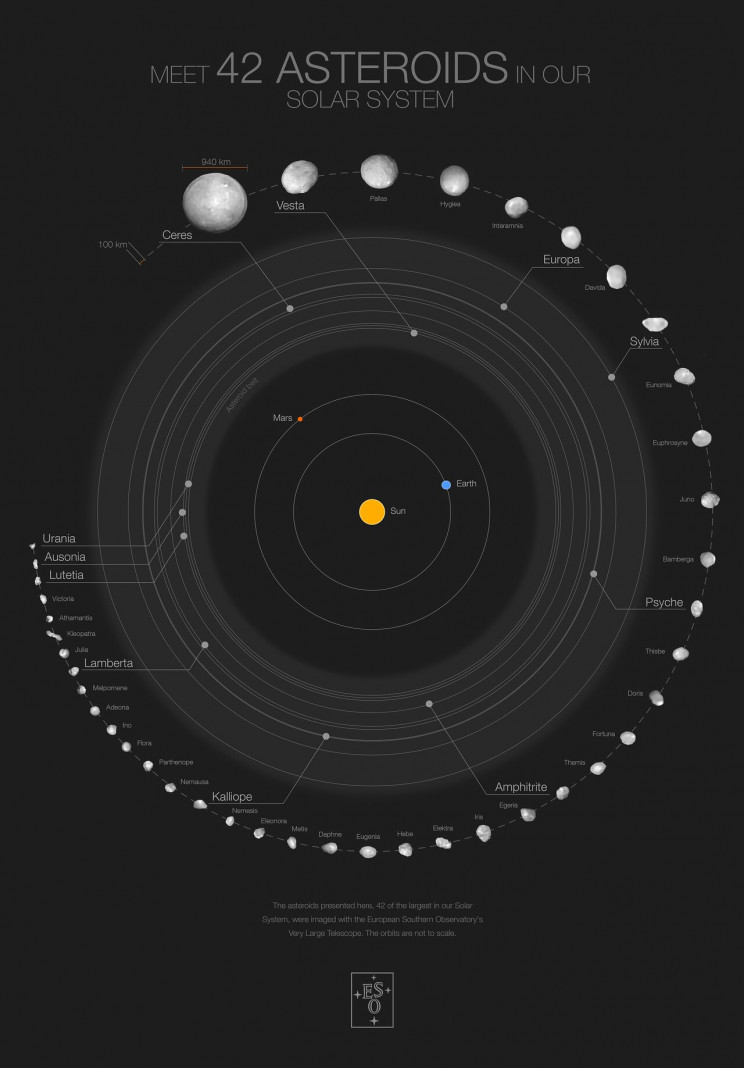
Image Credit: ESO/M. Kornmesser/Vernazza et al.
Its total mass is estimated at 5.27×1021 lbs (2.39×1021 kg), equivalent to about 3% of the Moon’s mass. More than 200 asteroids are larger than 100 km in diameter, including Ceres, 4 Vesta, 2 Pallas, 10 Hygiea, and others. These four asteroids account for more than half of the Belt’s total mass, with more than one-third accounted for by Ceres alone.
Despite the common misperceptions, the Asteroid Belt is mostly empty space, with objects spread over a large volume of space. The main population of the Asteroid Belt is sometimes divided into three zones, which are based on what is known as Kirkwood Gaps.
These describe the dimensions of an asteroid’s orbit based on its semi-major axis and are named after astronomer Daniel Kirkwood. He first discovered gaps in the distance of asteroids in 1866. These describe the dimensions of an asteroid’s orbit, based on its semi-major axis. Within this scheme, there are three zones:
- Zone I: spans between the 4:1 resonance and 3:1 resonance gaps, 2.06 and 2.5 AU from the Sun (respectively).
- Zone II: extends from the end of Zone I out to the 5:2 resonance gap, which is 2.82 AU from the Sun.
- Zone III: extends from the outer edge of Zone II to the 2:1 resonance gap at 3.28 AU from the Sun.
The Asteroid Belt may also be divided into the inner and outer belts. The inner Belt consists of asteroids that orbit nearer to Mars than the 3:1 Kirkwood gap (2.5 AU). The outer Belt consists of asteroids closer to Jupiter’s orbit. The asteroids that orbit with a radius of 2.06 AU from the Sun can be considered the inner boundary of the asteroid belt.
The temperature of the Asteroid Belt varies with the distance from the Sun. For dust particles within the Belt, typical temperatures range from -99 °F (-73 °C) at 2.2 AU down to -162 °F (-108 °C) at 3.2 AU. However, due to rotation, the surface temperature of an asteroid can vary considerably as the sides are alternately exposed to solar radiation and then to the stellar background.
Like the terrestrial planets, most asteroids are composed of silicate rock, while a small portion contains iron and nickel. The remaining asteroids are made up of a mix of these, along with carbon-rich materials. Some of the more distant asteroids tend to contain more ices and volatiles, including water ice. The Main Belt consists primarily of three categories of asteroids:
- C-type: carbonaceous asteroids (carbon-rich) that comprise over 75% of visible asteroids.
- S-type: silicate and metal asteroids, more common toward the inner region of the Belt.
- M-type: metallic asteroids (iron-nickel and some silicates) that comprise 10% of the total population.
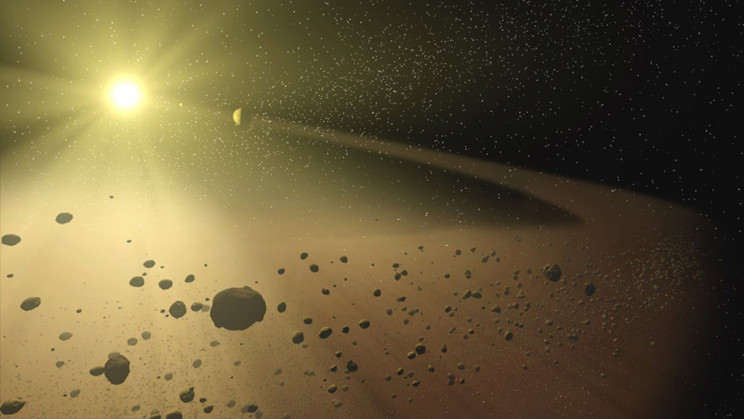
There are also the mysterious and relatively rare V-type (or basaltic) asteroids that were once believed to have originated from Vesta. However, the discovery of basaltic asteroids with different chemical compositions suggests a different origin, and current theories of asteroid formation predict that the V-type asteroids should be more plentiful.
*The same distance between the Earth and the Sun
Major bodies
As noted, the Belt is populated by millions of known objects, but more than half of its mass is claimed by four planetoids – Ceres, 4 Vesta, 2 Pallas, and 10 Hygiea. These bodies range in terms of size, shape, and have varied compositions. As a result of Resolution 5A: “Definition of ‘planet‘” passed during the 2006 General Assembly of the IAU, these bodies are classified as “minor planets.”
Measuring about 584 mi (940 km) in diameter, Ceres is the largest of the four bodies and is the only planetoid in the Belt (or Solar System) to be massive enough to achieve hydrostatic equilibrium (become spheroid in shape). This led to its reclassification as the only “dwarf planet” in the Belt, as part of the IAU’s 2006 Resolution.
Ceres has a mass of around 20.68×1020 lbs (9.38×1020 kg), roughly 1.28% as massive as the Moon, and is largely composed of water ice, carbonates, and silicate minerals. These are believed to be differentiated between a largely icy outer crust, an interior ocean of saltwater and rock, and a rocky mantle and metallic core.
While it is the most massive body in the Asteroid Belt, Ceres is believed to have formed beyond the orbit of Jupiter and migrated to the Belt. Between its low mass and density, the surface gravity is also quite low: less than 3% that of Earth (0.028 g). Its surface is covered by craters measuring between 10 and 60 mi (20 and 100 km), while the largest measures 176 mi (284 km) across – the Kerwal Basin.
The surface also shows signs of cryovolcanism, as indicated by its bright regions, which appear to be composed of water ice and silicate material. These features bolster the case for action between the surface and an interior ocean, possibly due to impacts on one side that triggered activity in the interior.
Vesta has a mean diameter of 326 mi (525 km), but the diameter varies depending on which axis. In truth, Vesta has a flattened hexagonal shape that measures 355.8 × 346.2 × 277.4 mi (572.6 × 557.2 × 446.4 km). While Vesta is about one-quarter the mass of Ceres – 5.7×1020 lbs (2.59×1020 kg) – its mean density is higher, resulting in similar surface gravity of around 2.5% (0.025 g).
Compared to Ceres, Vesta is believed to have formed in the Asteroid Belt, due to its silicate and metallic composition. These are differentiated between a metallic core of iron and nickel measuring 133-140 mi (214-226 km) and a rocky olivine mantle and surface crust. The surface is also covered in regolith (silicate dust), indicating “space weathering.”
At roughly 318 mi (513 km) in diameter and with a mass of roughly 4.4×1020 lbs (2×1020 kg), Pallas is slightly smaller and less massive than Vesta. Based on spectroscopic observations, Pallas’ surface is composed of silicate minerals containing trace amounts of water ice, and iron. Its surface gravity is comparable to Ceres and Vesta, at around 2.2% of Earth-normal gravity (0.022 g).
Hygeia has a mean diameter of around 269 mi (434 km) and a mass of around 1.92×1020 lbs (8.75×1019 kg). Like Pallas, it has a roughly spheroid shape but is not massive enough to have achieved hydrostatic equilibrium. Based on spectroscopic observations, the surface appears to be composed primarily of carbonaceous materials similar to those found in C-type meteorites, with evidence of past water ice.
Cold, irradiated, and dusty
To put it simply, the Asteroid Belt is not a friendly environment. Even the largest asteroids are airless, which means that everything in the Belt is exposed to the vacuum of space. Its distance from the Sun places it firmly in the “Frost Line,” where conditions are consistently cold enough for volatile compounds such as water, ammonia, methane, carbon dioxide, and carbon monoxide to condense into solid ice grains.
For dust particles and larger bodies in the Belt, surface temperatures are also very extreme, typically ranging from -99 °F (-73 °C) at 2.2 AU down to -162 °F (-108 °C) at 3.2 AU. However, due to rotation, the surface temperature of an asteroid can vary considerably as the sides are alternately exposed to solar radiation and the darkness of space.
Radiation exposure is also a major hazard due to the lack of atmospheres or planetary magnetic fields. This includes solar radiation, which becomes far more intense during solar flare activity, and galactic cosmic rays (GCRs). It is estimated that human settlers would need to burrow at least 328 ft (100 meters) beneath the surface to ensure protection.
Much like the Moon and other airless bodies, bodies in the Asteroid Belt also have significant amounts of regolith. This means that any settlements on or within asteroids will have a “dust problem,” where tiny shards of silica will pose hazards for respiratory health, stick to everything, and mess with machinery and electronics. And as always, there is the issue of low gravity.
On all the major bodies in the Belt, the gravitational force is between 2 and 3% of what we experience here on Earth. Everywhere else, the conditions are what is known as “microgravity,” similar to what astronauts are exposed to aboard the ISS. According to studies performed on the ISS, the long-term effects include muscle and bone density loss and effects on cardiovascular health and organ function.
Another major issue is the distance between the Main Belt and Earth. As with Mars, the distance to the Belt’s minor planets varies considerably as they orbit the Sun. For example, between April 2021 and December 2021, the distance between Ceres and Earth ranged from a maximum of 3.9 AU to a minimum of 1.76 AU. Between July 2022 and March 2023, it will range from 3.6 AU to 1.6 AU.
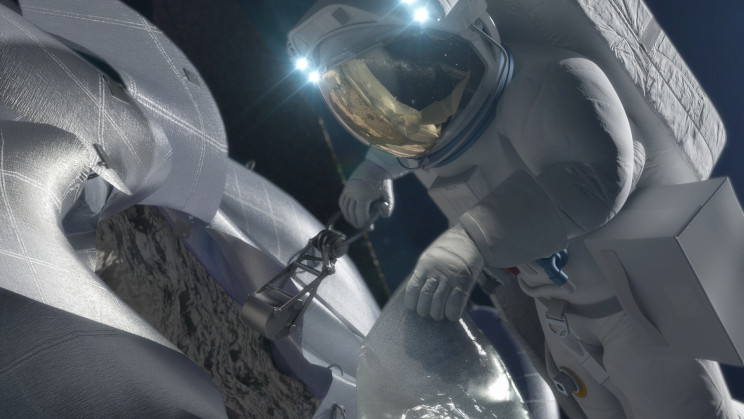
Credits: NASA
In short, the range between Ceres and Earth more than doubles during a seven to eight-month period. This means that missions to and from the Belt could only launch during certain windows. While this is more convenient than the 26-month launch window with Mars, the distances are about four times greater – 0.374 AU to 1.67 AU.
For long-term habitation in the Asteroid Belt to become a reality, the settlements will need to be as self-sufficient as possible. But with the right work, the Main Belt could become the mining and manufacturing hub of the Solar System.
“Terraforming” the Belt
Establishing self-sustaining habitats in the Belt requires leveraging local resources to meet the needs of the inhabitants – a process known as In-Situ Resource Utilization (ISRU). This includes harvesting local water ice to create oxygen gas, propellant, and drinking water; and mining regolith and minerals to create manufacturing materials.
Luckily, the Asteroid Belt has abundant resources, depending on the class involved. C-type carbonaceous asteroids, which account for 75% of the Main Belt, and are believed to have abundant water ice. Several mission proposals have been drafted to harness this abundant resource and use it to advance exploration and settlements efforts in the Main Belt.
Similarly, the settlers will need to engineer bioregenerative life support systems to ensure sustainable living conditions. This would require creating self-sustaining biomes within the habitats that conform to a Terraform Sustainability Assessment Framework (TSAF), which comes down to creating living systems that mimic Earth’s.
A good example is a proposal for a “megasatellite settlement” consisting of rotating habitats (Stanford Toruses) in orbit around Ceres. This concept was proposed by theoretical physicist Dr. Pekka Janhunen, a research manager with the Finnish Meteorological Institute and a senior technical advisor Aurora Propulsion Technologies.
As Dr. Janhunen described it, the settlement would bring terraforming to the Belt in the sense of “creating an artificial environment, near Ceres and of Ceres materials, that can scale up to the same and a larger population than Earth has today.” The design calls for habitats that rotate to simulate gravity attached to a disk-shaped frame through passive magnetic bearings.
Using local resources, an Earth-like atmosphere could be created within these habitats. This would consist of using nitrogen, water ice, and frozen carbon dioxide from Ceres to create nitrogen gas (as a buffer), oxygen gas, and trace amounts of frozen volatiles. This could be pumped into the habitats to create a sustained atmospheric pressure of 101.325 kPa, consisting of 78% nitrogen, 21% oxygen, and trace amounts of CO2 and other gases.
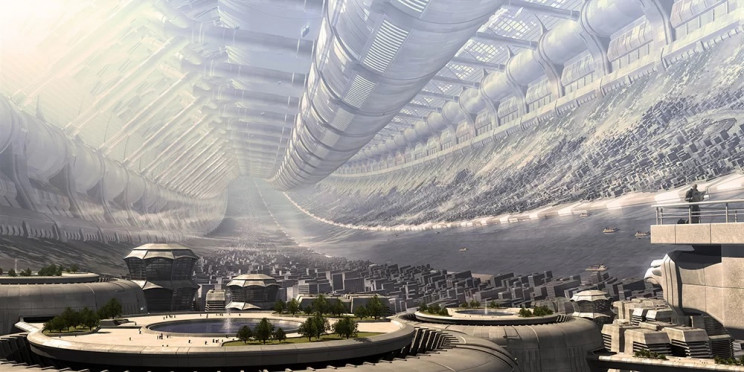
Locally-sourced regolith could then be imported and combined with organic molecules to fashion “soil.” These would include the high amounts of organic carbon, phosphorus, and other chemicals that are key fertilizer ingredients. The introduction of plants, over time, would enrichen the soil and remove heavy metals, allowing for crops to be grown.
Trees and grasses would be introduced to stabilize the soil and create a water cycle for the habitat. Different habitats could host different types of biomes (grassland, desert, jungle, alpine, etc.) that are interconnected to ensure that the habitat is as “Earth-like” as possible – thereby fulfilling the “terraforming” aspect of the Asteroid settlements.
Similar habitats could be built near Vesta, Pallas, Hygeia, and any other large bodies rich in natural resources. From these habitats, regular missions could be mounted to mine asteroids for their mineral wealth, which could be shipped back to Earth, other planets, or other habitats in space or manufactured into goods on-site.
The Solar System’s “industrial heartland”
In his book, Entering Space, famed science communicator and space exploration advocate Robert Zubrin wrote:
“The asteroid belt is known to contain vast supplies of very high-grade metal ore in a low gravity environment that makes it comparatively easy to explore to Earth… These asteroids collectively represent enormous economic potential… For mining purposes, the real action is going to be in the Main Belt, where millions of 1-km class ($150 billion worth of [platinum] class!) objects undoubtedly reside.”
The monetary values used by Zubrin here come from the 1987 book Space Resources: Breaking the Bonds of Earth, co-authored by cosmochemist Prof. John Lewis (Univ. of Arizona) and his wife, Ruth Lewis. For example, the pair considered a single S-type asteroid with very little water but abundant metals like nickel, cobalt, and precious metals like gold, platinum, and rhodium.
According to Lewis and Lewis, a small S-type asteroid measuring 0.6 mi (1 km) in diameter would have a mass of about 2.2 billion tons (2 billion tonnes). Of this, they estimate that the following amounts of precious and “strategic” metals would be available:
- 200 million tonnes of iron
- 30 million tonnes of high-quality nickel
- 1.5 million tonnes of cobalt
- 7,500 tonnes of platinum group metals (ruthenium, rhodium, palladium, osmium, iridium, and platinum)
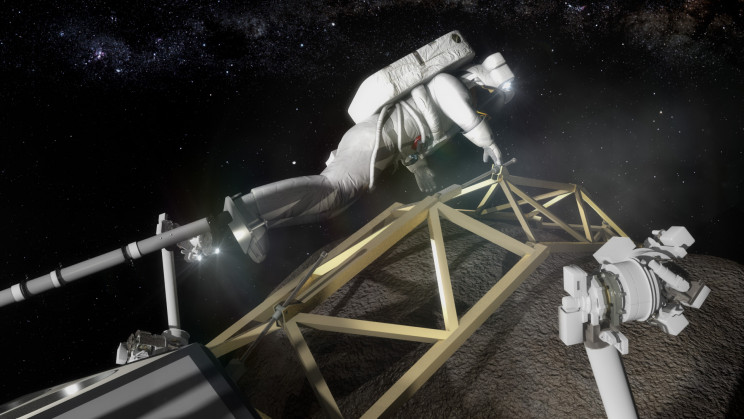
Image Credit: NASA
Based on the market value of palladium metals alone in 1987, Lewis and Lewis calculated that this asteroid would have a dollar value of $150 billion ($371 billion with inflation). When you factor in the current market value (at the time of writing) of the other metals – iron ($27.1 billion), nickel ($745 billion), and cobalt ($1.11 trillion) – the total value of one run-of-the-mill S-type asteroid reached $2.253 trillion – over 10% of annual GDP in the U.S.
Another estimate takes a look at small S-type asteroids – measuring just ~33 ft (10 m) in diameter. An asteroid this size could contain about 1.433 million lbs (650,000 kg) of metal, 110 lb (50 kg) of which would be precious metals like platinum and gold. Rare, M-type asteroids contain even more metals, mostly iron-nickel, and significant amounts of rare and precious metals.
The largest of these is 16 Psyche, one of the most massive asteroids in the Solar System that is believed to be the iron core remnant of a protoplanet that lost its silicate outer layers (possibly during a collision with another protoplanet). Current estimates place this body’s diameter at 157 mi (253 km) and its mass at 5×1019 lbs (2.287×1019 kg).
In terms of composition, Psyche is believed to be largely made up of metallic iron, nickel, and gold, with residual silicate minerals. Scientists will know more about its composition when NASA’s Psyche mission arrives at the asteroid in early 2026. Nevertheless, current estimates place the value of the asteroid’s metals at as high as $10,000 quadrillion.
To give you some perspective, the annual GDP of the entire planet was estimated at $87 trillion, based on 2019 figures. If the asteroid could be towed to Earth tomorrow and its minerals harvested rapidly, the entire market for metals would collapse. The sheer abundance of all the metals it contains would make metals worthless.
However, if Psyche and other metal asteroids could be harvested gradually, they would become a welcome addition to our planet’s economy. As for how these minerals would be mined, NASA explored many ideas in two publications: “A Review of Extra-Terrestrial Mining Robot Concepts” (2012) and “Robotic Asteroid Prospector” (RAP) (2013).
In these reports, NASA reviewed concepts proposed in the previous forty years (both crewed and uncrewed) and explored the four aspects of the process – prospecting, mining/retrieval, processing, and transportation. Ultimately, they determined that the challenge would be best handled by robotic machines working in collaboration with human explorers.
“Humans will benefit from the resources that will be mined by robots,” it says. “They will visit outposts and mining camps as required for exploration, commerce, and scientific research, but a continuous presence is most likely to be provided by robotic mining machines that are remotely controlled by humans.”
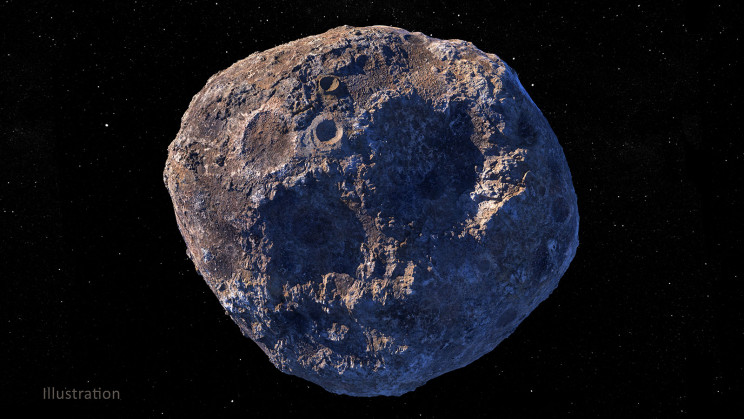
They also advised that any attempts to conduct mining missions be preceded by extensive prospecting using space-based telescopes, the creation of infrastructure in space, the construction and maintenance of the robotic spacecraft in space, and the creation of processing facilities where ore could be shipped to.
With little effort, one can imagine what asteroid mining would look like. The mining vessels will be built on a series of “space platforms” located in the Belt. These vessels will be automated and likely controlled by a central AI or “swarm intelligence.” The process of prospecting, mining, processing, and shipping will be overseen by human workers in the Belt, operating out of facilities close to their habitats.
Processing will also take place on a series of “foundry” platforms, where the ores are turned into purified metals and maybe even finished products. Shipping vessels will then send these products to Earth, Mars, the Moon, and anywhere else they are in demand. Similar efforts will mine for water ice and organics used by the local settlements, with some being exported as well.
Power will likely be provided by a combination of solar arrays, kilo power nuclear arrays, mini-reactors, and possibly fusion reactors (which could be fueled using Helium-3 mined on the Moon). In time, a thriving economy could be created based on extracting water ice, volatiles, chemicals, and minerals from the asteroids.
This economy could draw settlers from Earth and elsewhere, eventually leading to many habitats throughout the Main Belt. Additional industries, such as tourism and recreation, would spring up in time, and a human foothold in the Main Belt would facilitate missions farther out. This includes Jupiter and its system of moons, Saturn and its largest satellites, and beyond.
Beyond the questions of how and when humans could settle in the Main Asteroid Belt, there’s the inevitable question “why”? Why should humans establish a foothold in this region of space? There must be another source of motivation beyond the prospect of wealth and resources, surely? One of the more obvious ones is survival, both for human civilization and Earth.
In 2006, then-NASA administrator Michael Griffin stated the importance of space colonization during an interview with the Washington Post:
“The goal isn’t just scientific exploration. It’s also about extending the range of human habitat out from Earth into the solar system as we go forward in time. In the long run, a single-planet species will not survive. If we humans want to survive for hundreds of thousands or millions of years, we must ultimately populate other planets.”
Indeed, the ability to harness the resources of the Solar System and shift the burden of mining and manufacturing away from Earth could very well help us avert climate catastrophe in this century. And as noted public figures like Stephen Hawking and Elon Musk have stated, becoming “multi-planetary” may be the only way to ensure that human civilization won’t be wiped out in a single cataclysmic event.
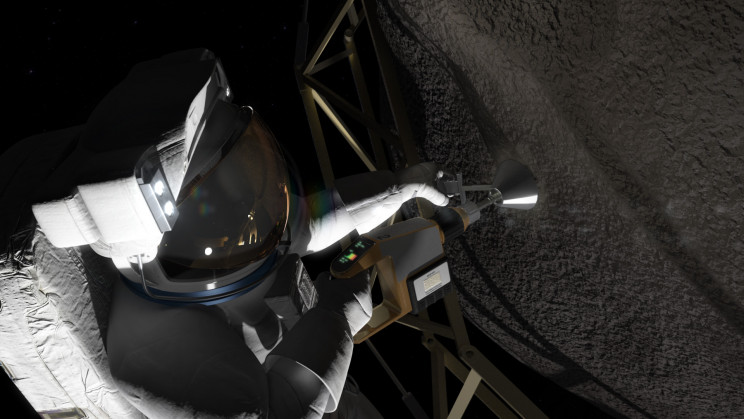
Image Credit: NASA
There’s also the prospect of growth and diversification. Once again, Zubrin explored this idea in Entering Space, where he claimed one of the most appealing reasons for settling the Asteroid Belt was the social diversity and experimentation it would allow for:
“This will make available thousands of potential new worlds, whose cultures and systems of law need never fuse. Perhaps some will be republican, others anarchist. Some communalist, others capitalist. Some patriarchal, others matriarchal. Some aristocratic, others egalitarian. Some religious, others rationalist. Some Epicuricans, others puritanical. Some traditional, others novel.
“For a long time to come, groups and human beings who think they have found a better way will have places to go where they can give it a try… The rest of humanity will watch and learn from their experiences. That which works will be repeated. So shall we continue to progress”
But perhaps the most compelling reason is the challenge that it represents. The drive to explore, set down in new places, and build a new life is a recurring theme in human history. When it comes to the Asteroid Belt or space in general, there’s also the prospect of doing it right this time – without slavery, genocide, and imperialism, like the previous period of colonization and “discovery.”
While living in the Asteroid Belt can only come after similar experiments are conducted closer to home – Low Earth Orbit (LEO), the Moon, and Mars – the benefits of settling the Main Belt are clear. Lots of places to settle, abundant resources, a thriving local economy, and a stepping stone to the outer Solar System. Someday, the term “Belters” could be a reference to something real.
“Here in the Belt, we don’t believe in ‘good-byes.’ For us, it’s always, ‘until we meet again!’ For those who live and thrive here, the movement of people and ships is a constant, and we’re forever growing and mixing. We hope you take that same spirit with you as you return to Earth, Mars, Luna, and other destinations!
“In the meantime, we hope you enjoy your stay aboard Piazzi, Olbers, Mande, or whatever port-of-call you are destined to before returning home. We remind our passengers that transitioning from low-g to regular gravity can be challenging. Please report to one of the many clinical facilities, or call for assistance, if you are experiencing difficulty walking and standing or are experiencing unusual swelling or pain.
“We would also like to remind our passengers that they will be required to undergo bioscans upon arrival and that the prohibition against taking from the local biome remains in effect. There is much to enjoy aboard our stations, but we ask that you leave it there.
“From all of us here at Ceres and the Main Asteroid Belt, we say: thank you all, and ‘until we meet again!'”

